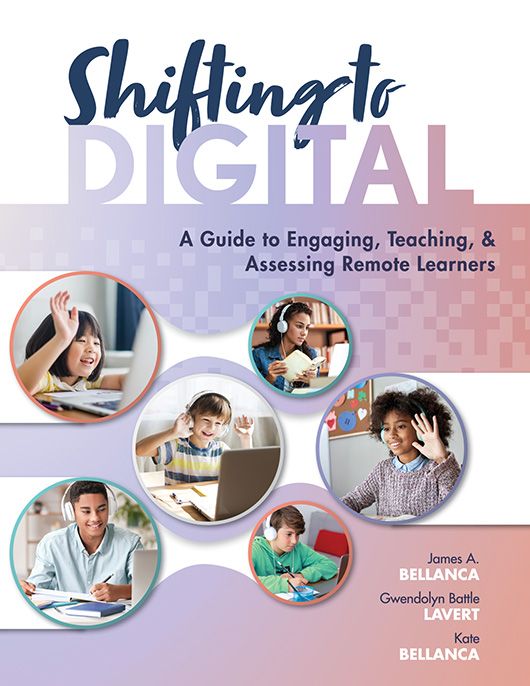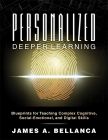
Shifting to Digital
A Guide to Engaging, Teaching, and Assessing Remote Learners
Rely on Shifting to Digital to give you clear, concise, and helpful answers to all of your remote teaching questions. This comprehensive guide provides specific strategies for planning high-engagement instruction, handling technology, assessing collaboration and assignments, and more.
Experience the convenience of eBooks! Access your eBooks anytime, anywhere on any desktop, Android, or iOS device through VitalSource. eBook purchases are limited to one eBook per title, per account. Please visit our FAQ for more information.
Shifting to Digital
Rely on Shifting to Digital to deliver clear and concise answers to all of your remote teaching questions. This comprehensive guide provides specific strategies for planning high-engagement instruction, handling technology, assessing collaboration and assignments, and more. You’ll also gain access to a helpful list of digital tools, along with online-specific lessons and projects for various subjects.
- Learn how to engage and manage multiple students online at one time.
- Create effective lesson plans that incorporate synchronous and asynchronous instruction based on best-practice cooperative learning and project-based learning.
- Gauge students' executive function and increase their self-direction—a crucial part of online learning.
- Understand how to best teach and support English learners and students with special needs.
- Plan communications for students, parents, and guardians that address technology procedures, expectations, and privacy.
Related Topics
Student EngagementTeacher EfficacyTechnology
Additional Information
“Shifting to Digital is a book made for this moment. Teachers need practical guidance on how to use digital technologies to address a host of challenges: from addressing students’ learning gaps, to ensuring that learning continues while students are away from school, to creating more capacity to support students’ social and emotional needs. On these fronts, this book delivers.”
When can I access my eBook? Your eBook will be accessible through VitalSource once your payment has been processed.*
*When using a check or purchase order, the order submitted online will not be processed until Solution Tree receives the check or a copy of the signed official purchase order. Your purchase order must note payment terms of net 30 days. We cannot process purchase orders that do not note these payment terms. Please submit all payments to [email protected].
How do I access my eBook?
To access your eBook:
- Create a free VitalSource account by visiting VitalSource.com. If you already have a VitalSource account, please log in to your account.
- Paste the redemption code that Solution Tree will email you in the “Redemption Code” field on VitalSource.com/Redeem. (Note: You can also access your redemption code within your Solution Tree account under the “eBook” section.)
- Click “Redeem.”
- Enjoy! Once your code is redeemed, your book will be added to your VitalSource Bookshelf and can be read anytime, anywhere.
What are the technical requirements for accessing the eBook? A VitalSource account is required. To sign up for your free account, please visit VitalSource.com.
What if I have trouble accessing my eBook? Please contact VitalSource by emailing [email protected] or by utilizing their Live Chat feature.
What are the shipping and handling costs? There are no shipping or handling costs associated with eBooks. For paperback and hardcover book purchases, standard shipping costs apply. Please visit the Product Orders page for more information on shipping and handling costs.
Can I purchase multiple copies of the same eBook? Bulk orders are not currently available through the website. Website purchases are limited to one eBook per title, per account. If you want to order multiple copies of an eBook, please contact customer support at [email protected].
What if I need to request a refund on my eBook order? RETURN POLICY: We are unable to accept returns or cancel previously placed eBook orders.





